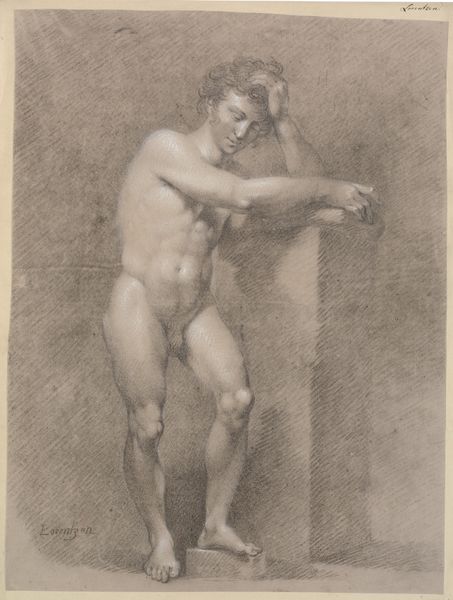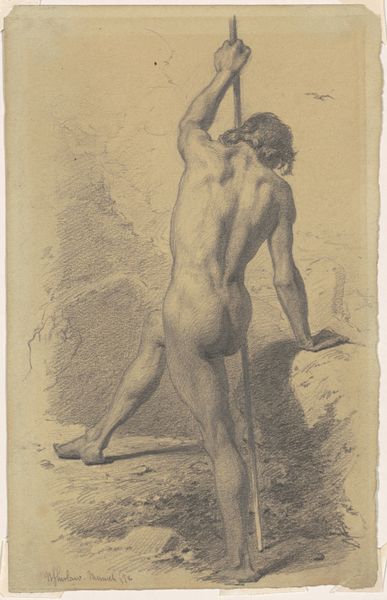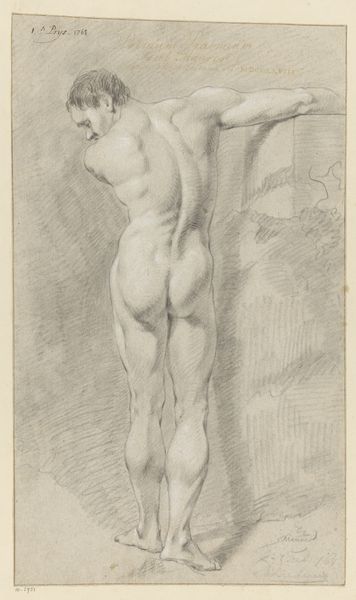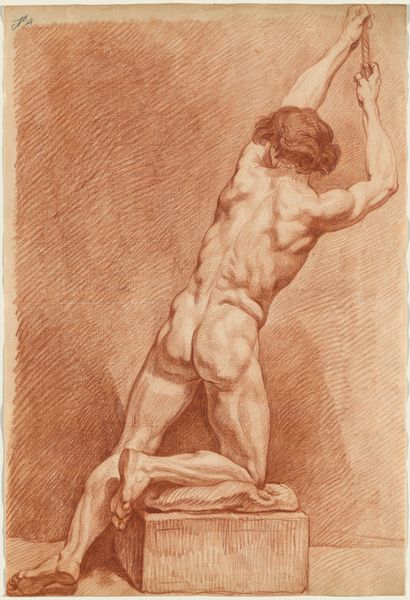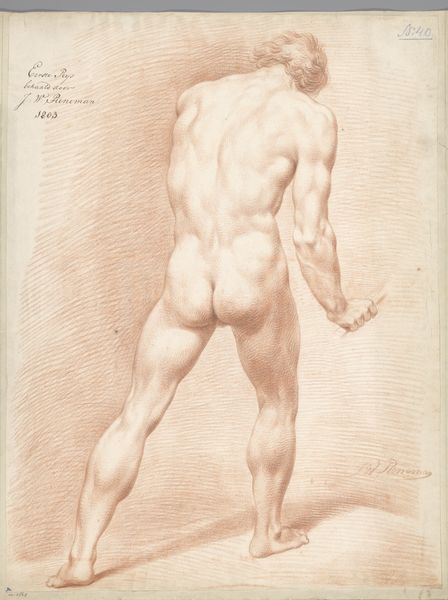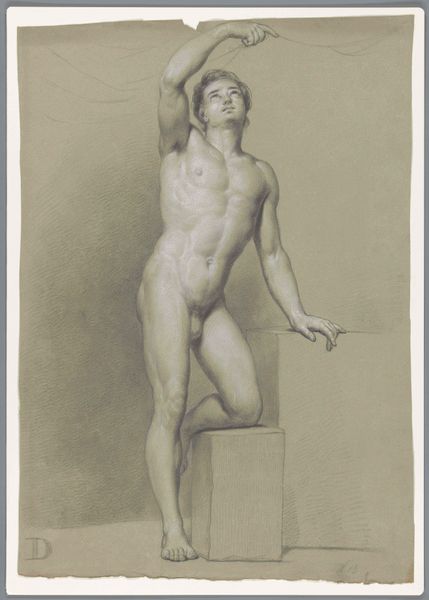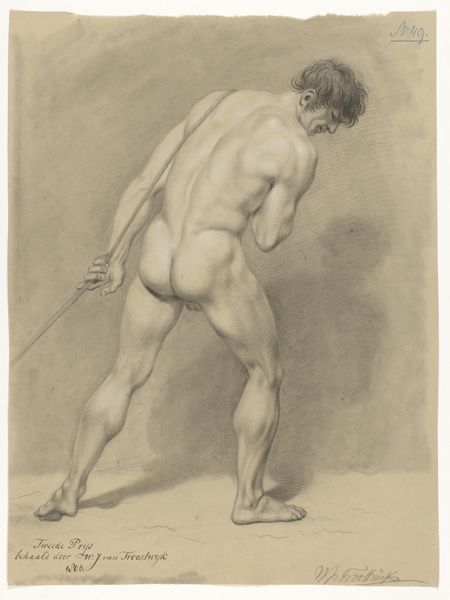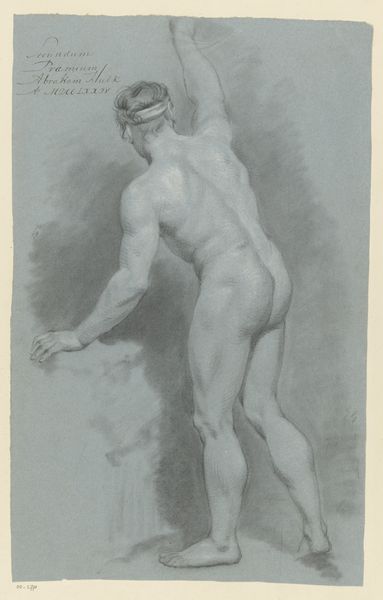
drawing, paper, charcoal
#
drawing
#
neoclacissism
#
charcoal drawing
#
figuration
#
paper
#
charcoal art
#
portrait reference
#
pencil drawing
#
portrait drawing
#
charcoal
#
history-painting
#
academic-art
#
nude
#
portrait art
Dimensions: height 520 mm, width 391 mm
Copyright: Rijks Museum: Open Domain
Editor: Here we have Daniël Dupré's "Standing Male Nude, Seen from the Back (3rd prize 1771)," likely created between 1771 and 1773, rendered in charcoal on paper. It strikes me how academic the pose is; it feels almost staged. What are your thoughts on this piece? Curator: It's interesting to consider this drawing within the context of artistic training at the time. The use of charcoal, a relatively inexpensive material, speaks to its function as a study piece. What does the "3rd prize" inscription suggest about its making and consumption? Editor: That's a great point! It suggests a competitive environment and the commodification of artistic skill, right? It’s no longer just about the art itself, but also about accolades and marketability. Curator: Precisely. And notice how the artist meticulously renders the musculature. This wasn’t just about representing the human form; it was about demonstrating mastery over materials and conforming to academic standards which would secure later commissions. Editor: So, the 'art' is both the object itself, and the labor and skill visibly embedded in its creation and intended purpose? It feels like the drawing itself becomes evidence of work and intended commodification. Curator: Exactly. Even the paper support plays a role. The artist would have chosen this particular type and weight of paper with a mind toward the finished artwork but also the cost and access to the tools available. The artist used economical materials as a step in an established process within academic art to establish their reputation. How interesting to think that the making process is so overtly apparent in what we see today! Editor: This has given me a new way of looking at academic drawings! Focusing on the material choices reveals so much about the economic realities behind artistic creation.
Comments
No comments
Be the first to comment and join the conversation on the ultimate creative platform.

